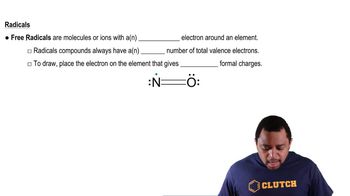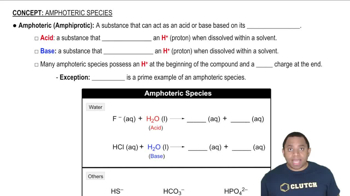Here are the essential concepts you must grasp in order to answer the question correctly.
Hydroxyl Radical
The hydroxyl radical (•OH) is a highly reactive species with an unpaired electron, making it a potent oxidizing agent. It can initiate reactions by abstracting hydrogen atoms from organic molecules, leading to the formation of new radicals and potentially damaging cellular components. Its reactivity is a key factor in its toxicity, as it can disrupt biological processes and cause oxidative stress.
Recommended video:
Lewis Dot Structures: Exceptions
Deprotonation
Deprotonation is the process of removing a proton (H+) from a molecule, resulting in the formation of a conjugate base. In the context of carboxylic acids, deprotonation typically occurs when a hydroxide ion (OH-) interacts with the acidic hydrogen of the carboxyl group (RCOOH), producing water and the carboxylate ion (RCOO-). This reaction is fundamental in acid-base chemistry and influences the reactivity and stability of organic compounds.
Toxicity of Reactive Oxygen Species (ROS)
Reactive oxygen species (ROS), including hydroxyl radicals, are known for their ability to cause cellular damage through oxidative stress. Unlike hydroxide ions, which are relatively stable and less reactive, hydroxyl radicals can rapidly react with a wide range of biomolecules, including lipids, proteins, and DNA. This high reactivity leads to significant biological damage, contributing to the toxicity of hydroxyl radicals in living systems.
Recommended video:



